Are you mesmerized by the vibrant colors and graceful flight of butterflies? If so, then creating your own butterfly garden is the perfect way to attract these delicate creatures and appreciate their beauty up close. In this beginner’s guide, you will learn the essential steps to transform your outdoor space into a haven for butterflies, providing them with food, shelter, and a safe haven to thrive. Get ready to embark on a delightful journey as you learn the secrets to creating a butterfly garden that will not only captivate your senses but also contribute to the conservation of these enchanting insects.
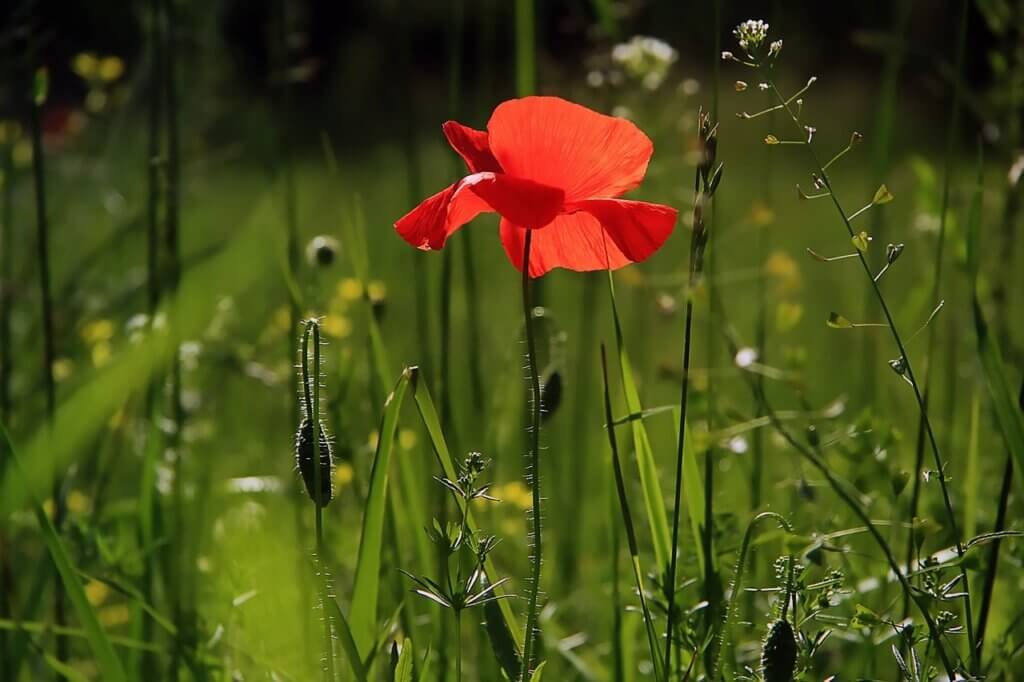
Choosing the Right Location for Your Butterfly Garden
When choosing the right location for your butterfly garden, there are a few key factors to consider. First and foremost, you need to think about sunlight and shade. Most butterflies thrive in areas with ample sunlight, so choose a spot that receives at least six hours of direct sunlight per day. However, it’s also important to have some areas of shade to provide relief from the intense heat. Look for a location that offers a good balance of both sunlight and shade throughout the day.
In addition to sunlight and shade, you also need to determine the soil conditions of the chosen location. Butterflies prefer well-drained soil, so avoid areas with heavy clay or compacted soil. If possible, choose a location with loamy soil that can retain moisture without becoming waterlogged. You may need to amend the soil with organic matter, such as compost, to improve its texture and drainage.
Another important factor to consider is wind patterns. Strong winds can make it difficult for butterflies to fly and feed, so choose a location that is sheltered from strong gusts. A location that is protected by hedges, fences, or other structures can help create a more favorable environment for butterflies.
Lastly, evaluate the proximity of your garden to host plants. Host plants are essential for the survival of butterfly larvae, so it’s important to have them nearby. Research the specific host plants for the butterfly species you want to attract and make sure they can be easily incorporated into your garden design.
Selecting the Ideal Plants for Your Butterfly Garden
Choosing the right plants for your butterfly garden is crucial to attracting these beautiful creatures. One important consideration is to choose native plant species. Native plants are adapted to the local climate and soil conditions, making them more attractive and beneficial to butterflies. They provide the right type of nectar and foliage that butterflies need for survival and reproduction.
Identifying host plants for butterflies is another key aspect of plant selection. Host plants are specific plant species that butterflies lay their eggs on and provide food for their caterpillars. Research the host plants for the butterfly species you want to attract and make sure to include them in your garden. By providing suitable host plants, you are creating a habitat that supports the complete life cycle of butterflies.
When selecting nectar-rich flowering plants, choose a variety of plant species that bloom at different times throughout the season. This way, you can provide a continuous supply of nectar for adult butterflies, ensuring they have a reliable food source. Consider including flowers of different colors and sizes to attract a diverse range of butterfly species.
It’s also important to consider the sizes and heights of the plants you choose. Butterflies prefer plants of various heights, as this allows them to find shelter from wind and predators. By creating a diverse plant community with plants of different heights, you can provide optimal habitat for a wide range of butterfly species.
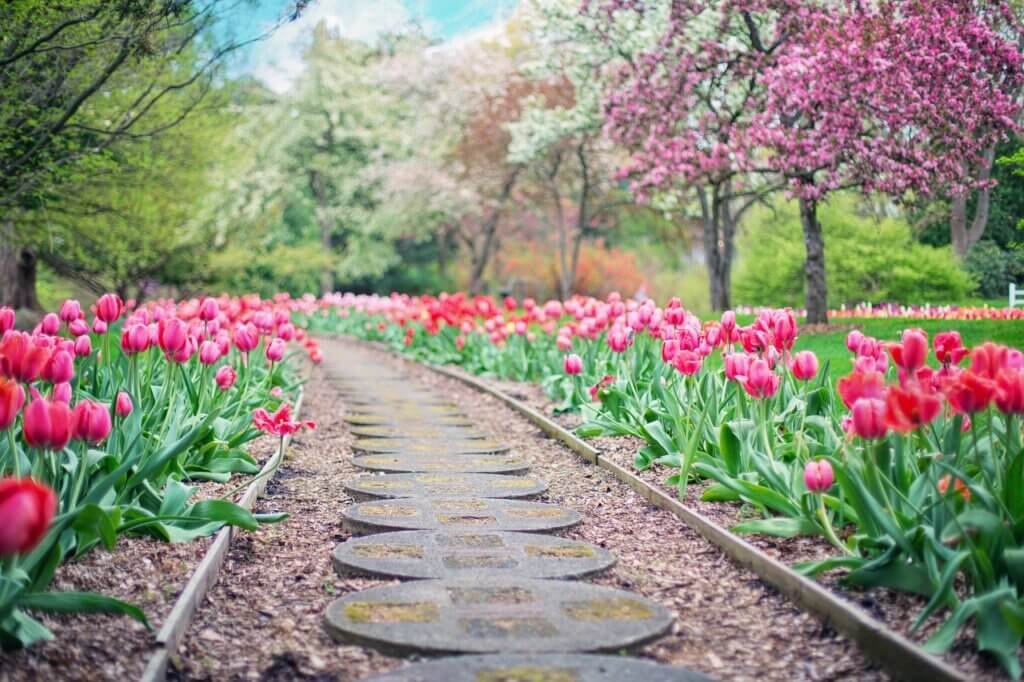
Preparing the Soil in Your Butterfly Garden
Before you start planting, it’s important to prepare the soil in your butterfly garden. Clear the area of weeds and rocks to create a clean canvas for your plants. Weeds can compete with your chosen plants for nutrients and water, so it’s important to eliminate them.
Amending the soil with organic matter is essential for improving its fertility and structure. Add compost or well-rotted manure to the soil to enrich it with nutrients and enhance its ability to retain moisture. This will create a more favorable environment for your plants and butterflies.
Proper drainage is vital for the health of your plants and the survival of butterfly larvae. Avoid areas with heavy clay soil that tends to become waterlogged. If necessary, improve drainage by incorporating organic matter or creating raised beds.
Testing the soil pH levels can also be helpful to ensure that your plants have the right conditions for optimal growth. Most butterflies prefer slightly acidic to neutral soil conditions, so aim for a pH level between 6.0 and 7.0. Adjust the pH if necessary by adding agricultural lime to raise the pH or sulfur to lower it.
To maintain soil moisture and suppress weed growth, mulching the garden beds is crucial. Apply a layer of organic mulch, such as leaf litter or wood chips, around your plants. This will help retain moisture, regulate soil temperature, and prevent weed growth, ultimately creating a healthier environment for your butterflies.
Designing the Layout of Your Butterfly Garden
Designing the layout of your butterfly garden is an exciting step that allows you to create an aesthetically pleasing and functional space for butterflies. To facilitate the successful attraction and nourishment of butterflies, you can consider several factors.
Creating different garden zones can help provide different microenvironments to attract a variety of butterfly species. For example, you can have a sunny zone with nectar-rich flowers, a shady zone with host plants, and a water zone with shallow puddles or a birdbath. By diversifying the garden zones, you cater to the varied needs and preferences of different butterfly species.
Arrange plants in clusters and layers to mimic the natural habitats of butterflies. Grouping plants together enhances their visual impact and makes it easier for butterflies to find them. By having layers of different plant heights, you create more structural diversity, allowing butterflies to find shelter and navigate their environment more easily.
Incorporating various colors and textures in your garden is not only visually appealing to humans but also attractive to butterflies. Butterflies are drawn to bright colors, especially red, orange, pink, and yellow. Plant a mix of flowering plants with different flower shapes and textures to create a diverse and captivating garden for both you and the butterflies.
Consider the flight patterns of butterflies when arranging your plants. Butterflies tend to fly in a looping or zigzag pattern, so leave enough open space for them to navigate and perform their characteristic flights. Ensure there are clear pathways and open areas for butterflies to dance and flit around with ease.
Including water sources and basking spots in your garden can greatly enhance its attractiveness to butterflies. Provide shallow puddles or saucers of water for butterflies to sip from, as well as a birdbath or small pond for them to perch and drink. Incorporate water-absorbing materials, such as sandy patches or damp gravel, to offer additional moisture sources for butterflies.
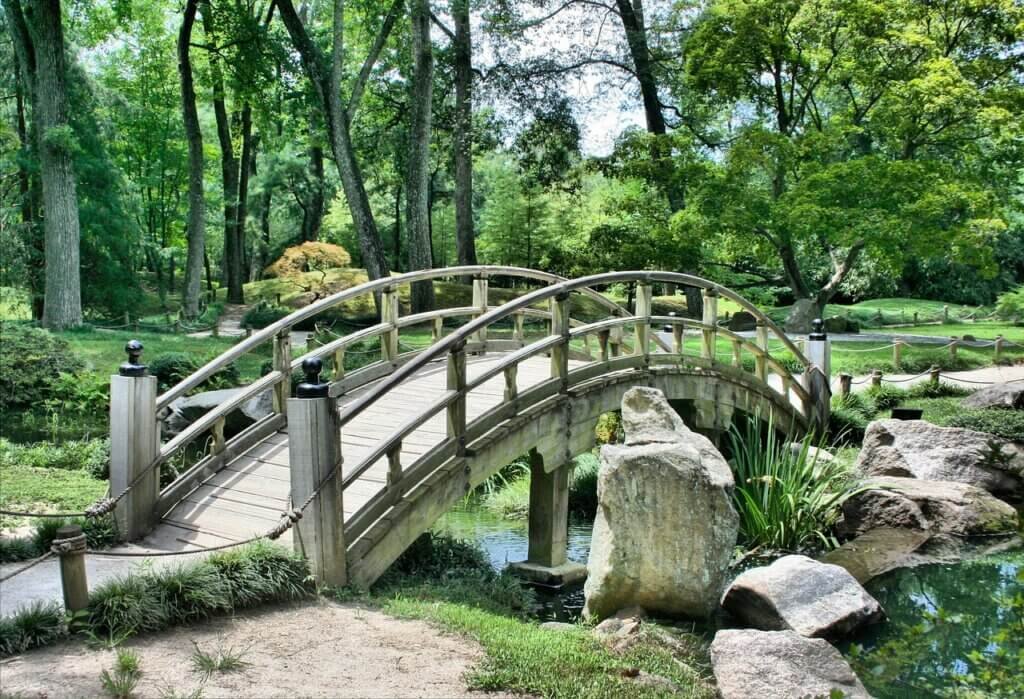
Attracting Butterflies with Water Sources
Water sources are crucial for attracting butterflies to your garden, as they provide essential hydration for these delicate creatures. To create an inviting oasis for butterflies, consider incorporating various water sources.
Provide shallow puddles or saucers filled with water for butterflies to drink from. Place these in sunny areas of your garden, as butterflies are more likely to visit water sources that are warm and exposed to sunlight. Be sure to keep the water levels low to avoid drowning the butterflies.
Including a birdbath or small pond adds an additional element of interest to your garden and provides larger bodies of water for butterflies. Butterflies often perch on the edges of shallow water bodies to drink and bask in the sun. Make sure to keep the water clean and fresh by changing it regularly.
Adding water-absorbing materials, such as damp sand or gravel, can provide alternative water sources for butterflies. Butterflies may be attracted to these materials to extract moisture, especially in arid or dry climates. Just ensure that the materials are regularly moistened to maintain their appeal to butterflies.
While water is important in attracting butterflies, it is essential to avoid standing water or stagnant areas. Standing water can become a breeding ground for mosquitoes, which can transmit diseases harmful to butterflies. Regularly check and maintain your water sources to prevent stagnation and keep them clean and inviting to butterflies.
Maintaining and cleaning water sources is vital for the health and safety of butterflies. Remove any debris or fallen leaves from birdbaths or ponds to prevent contamination and buildup of harmful bacteria. Keep the water sources filled with fresh water, ensuring that they are always accessible for the butterflies in your garden.
Including Essential Host Plants in Your Butterfly Garden
Host plants are a critical component of a successful butterfly garden, as they provide food and habitat for butterfly larvae, also known as caterpillars. To create a thriving habitat for butterflies, it’s important to include specific host plants in your garden.
Identify the host plants for butterfly species in your region by consulting local gardening resources or butterfly field guides. Each butterfly species has specific host plant preferences, so it’s necessary to choose the right plants to attract the butterflies you want to see in your garden.
Research the specific requirements of the host plants you choose. Some host plants may have certain soil, light, or moisture requirements. By understanding these requirements, you can ensure that you provide the ideal growing conditions for your host plants and, in turn, create a suitable environment for caterpillars.
Including multiple host plant varieties in your garden increases the chances of attracting a variety of butterflies. Different butterfly species have different host plants, so by offering a range of host plants, you increase the diversity of butterflies that may visit and reproduce in your garden.
It’s important to ensure that there are enough host plants for caterpillars to feed on. Caterpillars have voracious appetites, and a single plant may not provide enough food to sustain a growing population. Plant host plants in abundance, considering the potential number of caterpillars that may be present in your garden.
Creating a suitable environment for host plants to thrive is essential for the overall success of your butterfly garden. Ensure that host plants receive adequate sunlight, water, and nutrients. Regularly monitor the health of your host plants, removing any damaged or diseased leaves to prevent the spread of pests and diseases.
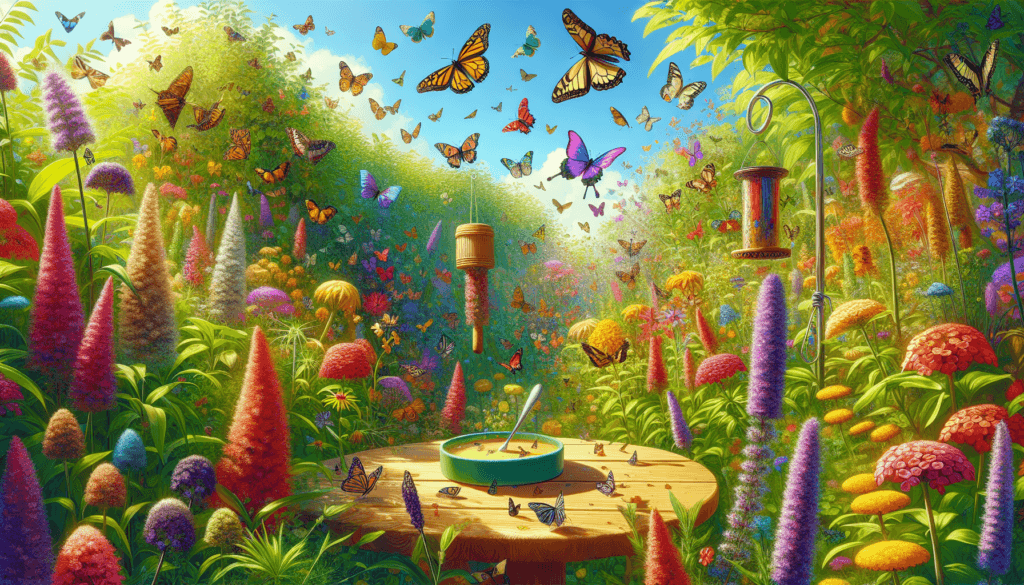
Choosing Nectar-Rich Flowers to Attract Butterflies
To attract butterflies to your garden, it’s crucial to choose nectar-rich flowers that provide a reliable food source for adult butterflies. By selecting the right flowers, you can create an irresistible buffet for butterflies and ensure a continuous supply of nectar throughout the season.
Select a variety of flowers with different blooming seasons. By incorporating early, mid, and late-season bloomers, you can provide a consistent and abundant food source for butterflies throughout their active period. This ensures that butterflies have access to nectar even during the shoulder seasons when other food sources may be scarce.
Include a range of flower colors in your butterfly garden. Butterflies are attracted to vibrant and bright colors, especially red, orange, pink, and yellow. By planting flowers with an array of colors, you can increase the visual appeal of your garden and attract a diverse range of butterfly species.
Choose plants with fragrant blossoms to enhance the sensory appeal of your garden. Fragrant flowers not only attract butterflies but also contribute to the overall ambiance of your outdoor space. Flowers with scents like lavender, jasmine, or honeysuckle are particularly attractive to butterflies.
Avoid the use of pesticides on your flowering plants. Pesticides can be harmful to butterflies and other beneficial insects. Opt for natural pest control methods or choose plants that are naturally resistant to pests. This allows you to create a safe and healthy environment for butterflies while also promoting ecological balance in your garden.
Maintain a constant supply of nectar-rich flowers by deadheading spent blooms and regularly fertilizing your plants. Deadheading encourages plants to produce more flowers, ensuring a continuous nectar supply. Fertilizing your plants with a balanced organic fertilizer supports their growth and allows them to produce more blooms throughout the season.
Maintaining and Caring for Your Butterfly Garden
Once your butterfly garden is established, proper maintenance and care are necessary to ensure its long-term success. By following a few simple practices, you can create an environment that is attractive and supportive of butterflies.
Water your garden appropriately to meet the needs of your plants and butterflies. Ensure that your plants receive enough moisture, particularly during dry spells. However, be careful not to overwater, as excessive moisture can lead to root rot or other fungal issues. Monitor the soil moisture levels and adjust your watering accordingly.
Regularly pruning and deadheading plants helps maintain their health and appearance. Remove any dead or damaged plant parts to prevent the spread of diseases. Deadheading spent blooms not only improves the aesthetic appeal of your garden but also encourages plants to produce more flowers and attract more butterflies.
Monitor your garden for pests and diseases. Keep an eye out for common garden pests like aphids, caterpillars, or spider mites, as well as signs of plant diseases such as leaf spots or fungal infections. Take prompt action to control pests or diseases using natural methods, such as picking off pests by hand or applying organic insecticidal soap.
Avoid the use of harmful chemicals in your butterfly garden. Pesticides, herbicides, and fungicides can be toxic to butterflies and other beneficial insects. Instead, embrace natural pest control methods, such as attracting natural predators or using organic pest control products. By avoiding harmful chemicals, you create a safe haven for butterflies to thrive.
Provide adequate shelter and protection for butterflies in your garden. Consider planting shrubs, hedges, or tall grasses that can serve as windbreaks and provide shelter from predators. You can also include butterfly houses or artificial structures where butterflies can rest and take refuge during inclement weather.
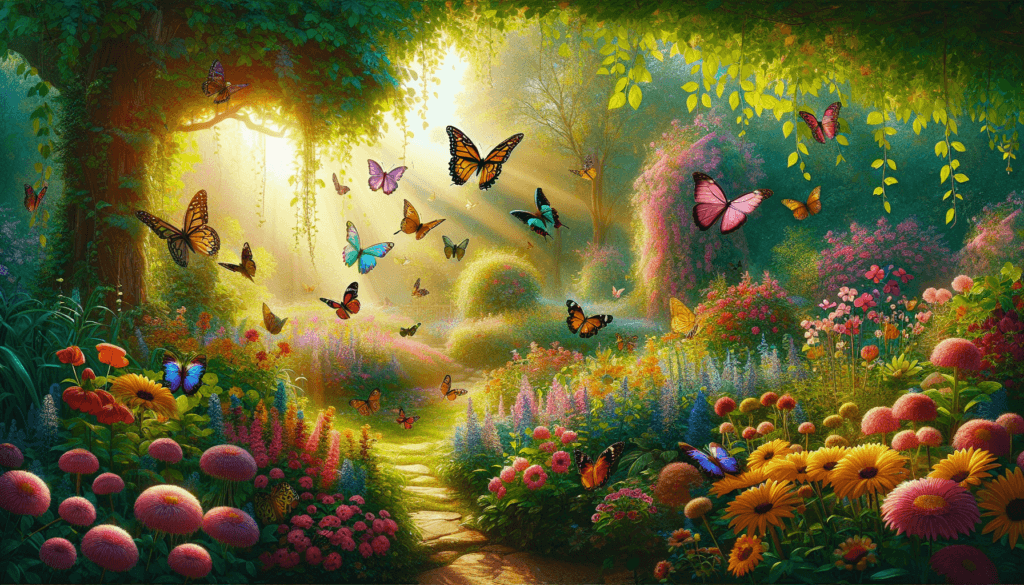
Observing and Enjoying Butterflies in Your Garden
Creating a comfortable viewing area allows you to fully appreciate the beauty and wonder of butterflies in your garden. Designate a seating area or create a cozy nook where you can relax and take in the sights and sounds of your butterfly paradise.
Consider using binoculars or cameras to capture close-up observations of butterflies. These tools allow you to get a detailed view of their intricate patterns and behaviors without disturbing them. Whether you’re a photography enthusiast or simply fascinated by the delicate details of butterflies, these tools can enhance your observation experience.
Recording butterfly species and behaviors in a journal or notebook can be an enjoyable and educational activity. Note the different butterfly species you encounter, their preferred plants, and any interesting behaviors or interactions you observe. This not only helps you deepen your understanding of butterflies but also provides valuable information for future garden planning.
Take the time to learn about the life cycles of butterflies. Understanding their life stages, from eggs to caterpillars to chrysalises to adult butterflies, can be a fascinating journey. Educate yourself about the specific life cycles of the butterfly species in your garden to appreciate their unique transformations.
Share the joy of your butterfly garden with friends and family. Invite them to visit and experience the beauty and tranquility of your garden. Consider hosting a butterfly-themed event or garden tour to share your knowledge and passion for butterflies with others. By spreading the joy, you can create a greater appreciation for these captivating creatures.
Conserving and Sustaining Butterfly Habitats
Conservation and sustainability are crucial for the long-term health and survival of butterfly habitats. By taking proactive measures and supporting relevant initiatives, you can contribute to the preservation of these precious ecosystems.
Promote conservation-minded education by sharing your knowledge and experiences with others. Offer workshops, talks, or guided tours of your butterfly garden to educate people about the importance of butterflies in the ecosystem. By raising awareness, you can inspire others to take action to protect and preserve butterfly habitats.
Participate in citizen science programs that collect data on butterfly populations and behavior. These programs allow you to contribute valuable data that scientists can use to study butterflies and monitor changes in their populations over time. By actively participating, you become an integral part of ongoing research and conservation efforts.
Support local butterfly conservation organizations through volunteering or donations. These organizations play a vital role in protecting and restoring butterfly habitats, conducting research, and raising awareness. By supporting their efforts, you contribute directly to the conservation of butterflies in your local area.
Avoid harmful gardening practices that negatively impact butterfly habitats. Minimize the use of chemical pesticides, herbicides, and fertilizers that can harm butterflies and their host plants. Choose organic and sustainable gardening methods that promote biodiversity and support the natural balance of ecosystems.
Promote butterfly-friendly neighborhoods and communities by creating butterfly habitats on a larger scale. Encourage your neighbors to plant native host and nectar plants in their gardens to create a network of interconnected butterfly habitats. By working together, you can transform your community into a welcoming and sustainable haven for butterflies.
Creating a butterfly garden is not only a rewarding experience for you but also a vital contribution to butterfly conservation. By carefully selecting the location, plants, and maintenance practices, you can create an inviting and susta


